More Effective C++ pdf epub mobi txt 电子书 下载 2024

简体网页||繁体网页
图书标签: C++ 编程 C/C++ 计算机 经典 进阶 Programming 计算机科学
喜欢 More Effective C++ 的读者还喜欢
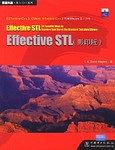 Effective STL pdf epub mobi txt 电子书 下载
Effective STL pdf epub mobi txt 电子书 下载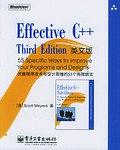 Effective C++ Third Edition pdf epub mobi txt 电子书 下载
Effective C++ Third Edition pdf epub mobi txt 电子书 下载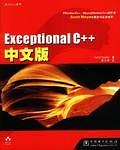 Exceptional C++中文版 pdf epub mobi txt 电子书 下载
Exceptional C++中文版 pdf epub mobi txt 电子书 下载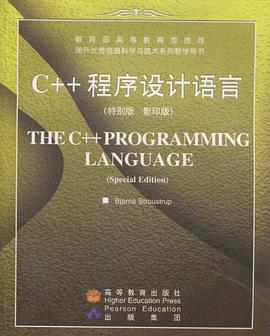 C++ 程序设计语言(特别版)(英文影印版) pdf epub mobi txt 电子书 下载
C++ 程序设计语言(特别版)(英文影印版) pdf epub mobi txt 电子书 下载 More Exceptional C++中文版 pdf epub mobi txt 电子书 下载
More Exceptional C++中文版 pdf epub mobi txt 电子书 下载 深度探索C++对象模型 pdf epub mobi txt 电子书 下载
深度探索C++对象模型 pdf epub mobi txt 电子书 下载 Exceptional C++ Style中文版 pdf epub mobi txt 电子书 下载
Exceptional C++ Style中文版 pdf epub mobi txt 电子书 下载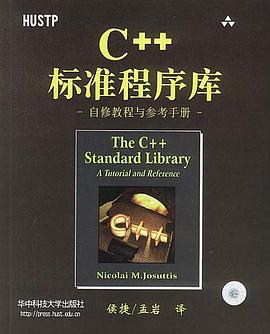 C++标准程序库 pdf epub mobi txt 电子书 下载
C++标准程序库 pdf epub mobi txt 电子书 下载 STL源码剖析 pdf epub mobi txt 电子书 下载
STL源码剖析 pdf epub mobi txt 电子书 下载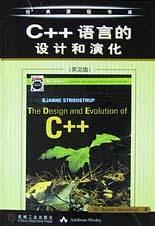 C++语言的设计和演化(英文版) pdf epub mobi txt 电子书 下载
C++语言的设计和演化(英文版) pdf epub mobi txt 电子书 下载
点击这里下载
发表于2024-06-14
More Effective C++ epub 下载 mobi 下载 pdf 下载 txt 电子书 下载 2024
More Effective C++ epub 下载 mobi 下载 pdf 下载 txt 电子书 下载 2024
More Effective C++ pdf epub mobi txt 电子书 下载 2024
图书描述
一些经过验证的用来改善程序效率的方法,包括检验C++语言特性所带来的时间和空间上的成本。
全面地描述了C++专家所使用的高级技术,包括placement new、virtual constructors、smart pointers、reference counting、proxy classes和double-dispatching等。
以实例说明异常处理带给C++类和函数的冲击。
介绍新的语言特性,包括bool、mutable、explicit、namespaces、成员模板、标准模板库等。如果你的编译器不支持这些特性,本书还介绍了如何不利用它们完成工作。
著者简介
Scott Meyers 拥有布朗大学计算机科学博士学位,是世界上最著名的C++软件开发权威之一。他的“Effective C++两卷本”(《Effective C++》和《More Effective C++》),开辟了技术图书写作的新风格。他曾担任《C++Report》杂志的专栏作家,经常为《C/C++Users Journal》和《Dr.Dobb's Journal》撰稿。
图书目录
More Effective C++ pdf epub mobi txt 电子书 下载
用户评价
读后感
这本书我看过几遍了,只是看过,每次拿起来的时候发现自己还有不理解的地方。看书不止看书的页数,而是看书的内容,无所谓时间,自己理解就好。这种书该时常翻,好好看。 书的内容和书名很匹配,讲的是通过书中的条款,如何写出更高效的代码。书的内容值得这个标题。看这本书之...
评分我刚读完 Effective C++ 后,不打算读这本 More 的。理由是想先在开发实践中贯彻一些 Effective C++ 中的最佳实践原则,在实践中消化、反馈和总结。 后来闲暇时,选择性地读了 More 的一些章节,感觉如获至宝,就有粗有细地通读下来。 对于两本书的比较,我的感觉是:Effective...
评分我刚读完 Effective C++ 后,不打算读这本 More 的。理由是想先在开发实践中贯彻一些 Effective C++ 中的最佳实践原则,在实践中消化、反馈和总结。 后来闲暇时,选择性地读了 More 的一些章节,感觉如获至宝,就有粗有细地通读下来。 对于两本书的比较,我的感觉是:Effective...
评分Meyers两本effective C++系列都看过了。 两者相比,Effectiv C++应该算是基础篇,*More*这本则更注重工程实践方面,介绍C++的高级技术。里面提到的Reference Count,Virtual Construstor, Smart Pointer这些技术在大型的C++项目都很常见, 自己是配合着Google的Chromium看的...
评分断断续续,虎头蛇尾,把这书翻过一遍(除了附录..)。开始的时候,看得比较慢,都后边就有点浮躁。 有些内容在编程过程中也有体会,看书就是再复习一遍,再学个书上对这种情况的称呼。也有部分内容没遇到过,看了也没能有深刻的印象,以后有时间再翻翻吧。 看到智...
More Effective C++ pdf epub mobi txt 电子书 下载 2024
分享链接
相关图书
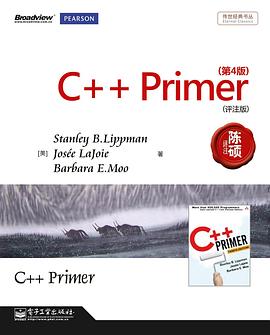 C++ Primer 第4版 评注版 pdf epub mobi txt 电子书 下载
C++ Primer 第4版 评注版 pdf epub mobi txt 电子书 下载 C++ Template Metaprogramming pdf epub mobi txt 电子书 下载
C++ Template Metaprogramming pdf epub mobi txt 电子书 下载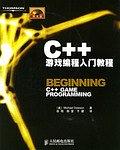 C++游戏编程入门教程 pdf epub mobi txt 电子书 下载
C++游戏编程入门教程 pdf epub mobi txt 电子书 下载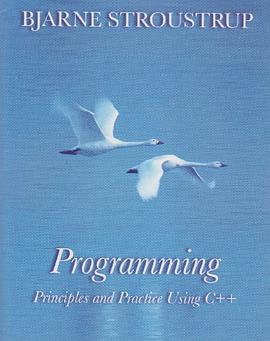 Programming pdf epub mobi txt 电子书 下载
Programming pdf epub mobi txt 电子书 下载 C++ STL 中文版 pdf epub mobi txt 电子书 下载
C++ STL 中文版 pdf epub mobi txt 电子书 下载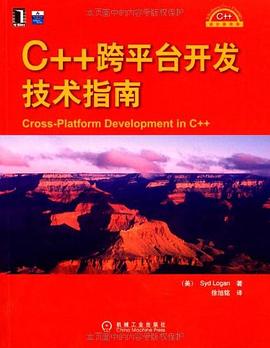 C++跨平台开发技术指南 pdf epub mobi txt 电子书 下载
C++跨平台开发技术指南 pdf epub mobi txt 电子书 下载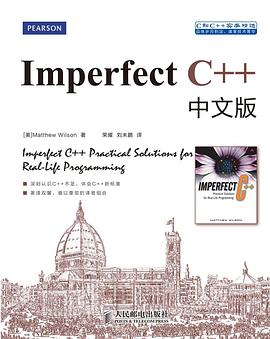 Imperfect C++中文版 pdf epub mobi txt 电子书 下载
Imperfect C++中文版 pdf epub mobi txt 电子书 下载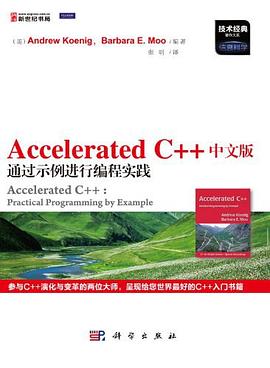 Accelerated C++中文版通过示例进行编程实践 pdf epub mobi txt 电子书 下载
Accelerated C++中文版通过示例进行编程实践 pdf epub mobi txt 电子书 下载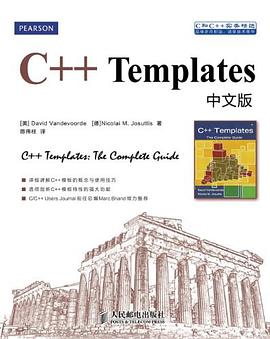 C++ Templates中文版 pdf epub mobi txt 电子书 下载
C++ Templates中文版 pdf epub mobi txt 电子书 下载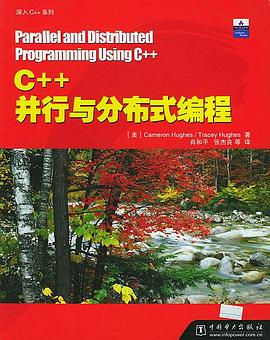 C++并行与分布式编程 pdf epub mobi txt 电子书 下载
C++并行与分布式编程 pdf epub mobi txt 电子书 下载 Visual C++ 技术内幕(第四版) pdf epub mobi txt 电子书 下载
Visual C++ 技术内幕(第四版) pdf epub mobi txt 电子书 下载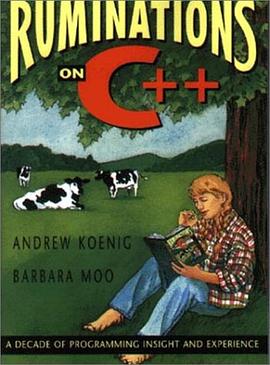 Ruminations on C++ pdf epub mobi txt 电子书 下载
Ruminations on C++ pdf epub mobi txt 电子书 下载 Effective STL pdf epub mobi txt 电子书 下载
Effective STL pdf epub mobi txt 电子书 下载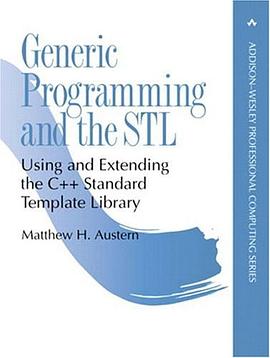 Generic Programming and the STL pdf epub mobi txt 电子书 下载
Generic Programming and the STL pdf epub mobi txt 电子书 下载 捉虫历险记 pdf epub mobi txt 电子书 下载
捉虫历险记 pdf epub mobi txt 电子书 下载 Effective C++ Third Edition pdf epub mobi txt 电子书 下载
Effective C++ Third Edition pdf epub mobi txt 电子书 下载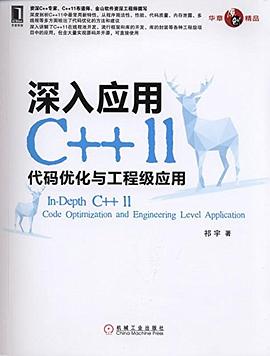 深入应用C++11 pdf epub mobi txt 电子书 下载
深入应用C++11 pdf epub mobi txt 电子书 下载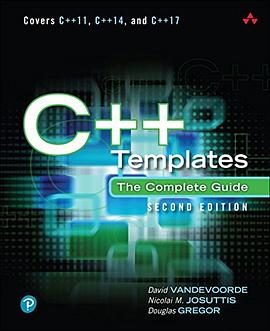 C++ Templates pdf epub mobi txt 电子书 下载
C++ Templates pdf epub mobi txt 电子书 下载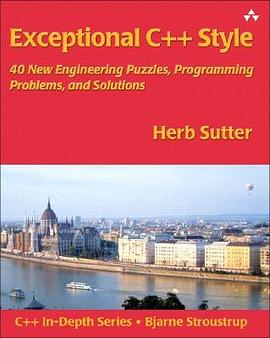 Exceptional C++ Style pdf epub mobi txt 电子书 下载
Exceptional C++ Style pdf epub mobi txt 电子书 下载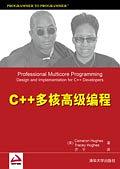 C++多核高级编程 pdf epub mobi txt 电子书 下载
C++多核高级编程 pdf epub mobi txt 电子书 下载



